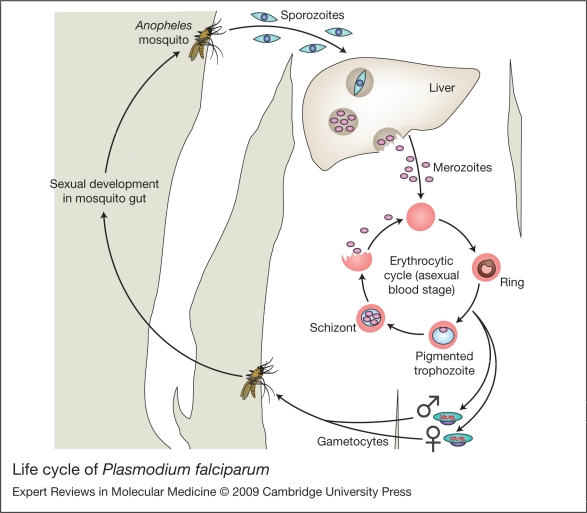Figure 1.
Life cycle of Plasmodium falciparum. When an infected female Anopheles mosquito takes a blood meal, sporozoite forms of P. falciparum are injected into the human skin. The sporozoites migrate into the bloodstream and then invade liver cells. The parasite grows and divides within liver cells for 8–10 days, then daughter cells called merozoites are released from the liver into the bloodstream, where they rapidly invade erythrocytes. Merozoites subsequently develop into ring-stage, pigmented-trophozoite-stage and schizont-stage parasites within the infected erythrocyte. P. falciparum-infected erythrocytes express parasite-derived adhesion molecules on their surface, resulting in sequestration of pigmented-trophozoite and schizont stages in the microvasculature. The asexual intraerythrocytic cycle lasts for 48 hours, and is completed by the formation and release of new merozoites that will re-invade uninfected erythrocytes. It is during this asexual bloodstream cycle that the clinical symptoms of malaria (fever, chills, impaired consciousness, etc.) occur. During the asexual cycle, some of the parasite cells develop into male and female sexual stages called gametocytes that are taken up by feeding female mosquitoes. The gametocytes are fertilised and undergo further development in the mosquito, resulting in the presence of sporozoites in the mosquito salivary glands, ready to infect another human host.

